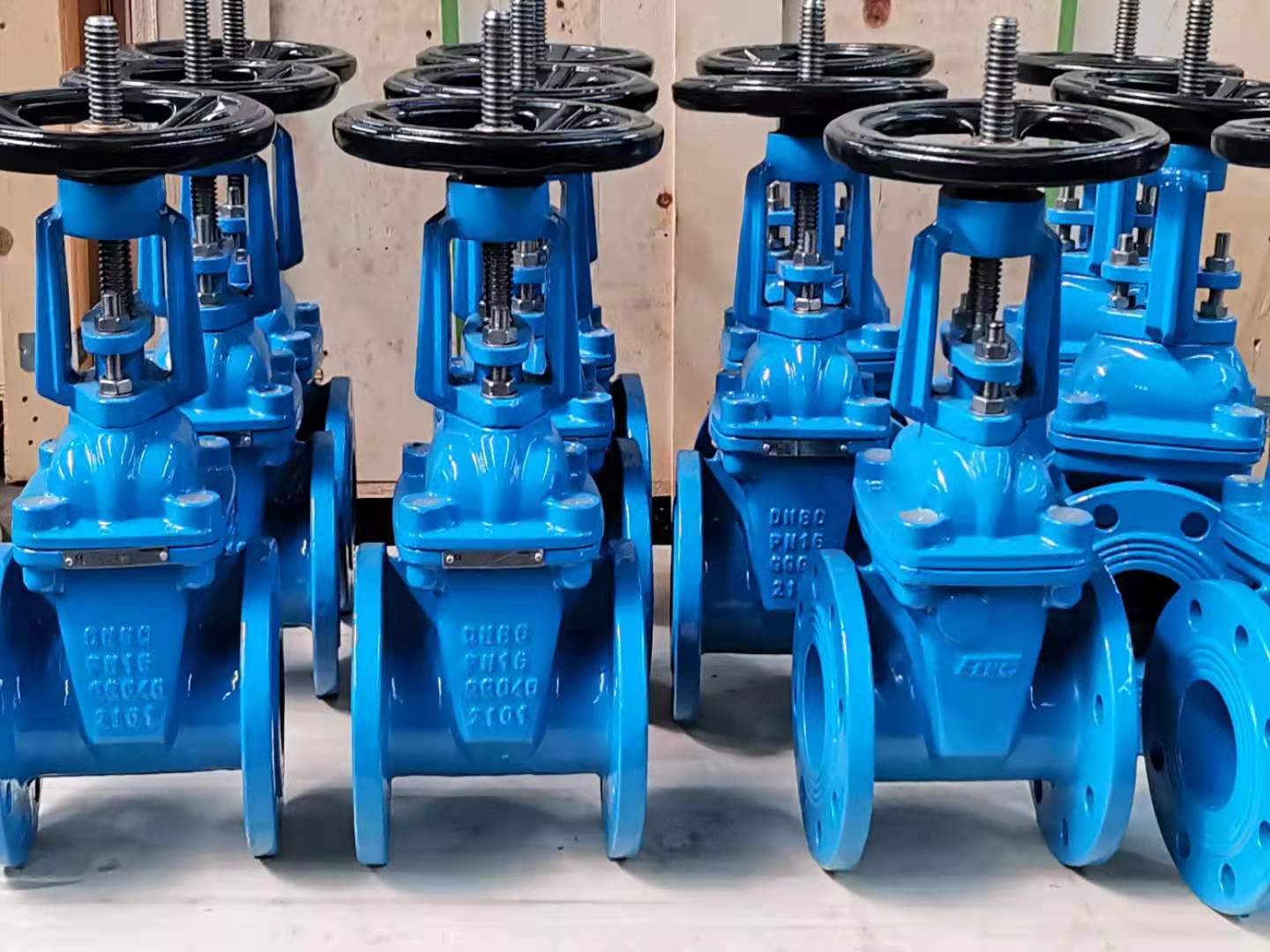A non rising stem resilient seated gate valve is a type of valve commonly used for controlled shut-off in fluid distribution systems. Let’s break down its key features and applications:
Construction and Operation
Gate valves operate using a wedge-shaped disc that moves linearly to open or close flow paths.
Resilient seating improves sealing compared to metal-to-metal designs. It incorporates an elastomeric “O-ring” around the disc edge, which compresses against the valve body for a drip-tight shut-off. This design ensures that irregularities in the pipeline do not affect the sealing.
In non-rising stem gate valves, the stem is threaded separately from the gate. As you turn the handwheel to open or close the valve, the gate rises and lowers, but the stem itself does not move up or down. This design maintains a compact envelope and prevents stress during buried service.
Valve Standards
These gate valves adhere to stringent specifications, ensuring interchangeability and quality assurance. For buried potable water, they follow standards like AWWA C509, while for aboveground service, they adhere to AWWA C515.
Compliant valves undergo hydrostatic shell testing, seat leakage acceptance, and operational durability verification. They maintain drip-tight sealing over millions of cycles.
Suitable Applications
Resilient seated gate valves find application in various scenarios:
- Municipal Water Transmission/Distribution: They play a crucial role in water supply systems.
- Industrial, Commercial, and Building Services: Mild industrial applications benefit from their robust performance.
- Isolating Pipelines: During maintenance or repairs, these valves help isolate sections of pipelines.
- Throttling Flows: They allow flow control within a system.
- Downstream Equipment Protection: By shutting off flow, they safeguard downstream equipment.
- Emergency Sectionalization: In emergencies, locating remotely, they can isolate specific parts of the system.
Installation Considerations
Proper installation factors in pipe stresses, substrate, operation loads, and accessibility for future maintenance.
Compact joints, thrust blocks, and trench design address installation loads.
Valves are oriented to position actuators above grade or indoors, avoiding joints within casing intervals.
External coatings and lining protect against corrosive contents and harsh environments.
Maintenance Practices
- Routine exercising and inspections catch early signs of minor leakage, allowing proactive O-ring replacement.
- Flushing before repairs removes debris that could damage sealing interfaces.
- Repair “kits” simplify barrier replacements during infrequent shutdowns.
- Cathodic protection retards corrosion if electrically isolated.
- Proper handling protects seal materials during joint assembly.
The relationships with other types of gate valves
Non-Rising Stem Gate Valve
A non-elevating stem gate valve belongs to a category of gate valves distinguished by the stem, which remains fixed in its position while the valve is in operation. When you manipulate the handwheel to either open or close the valve, the gate, located within the valve, moves vertically, while the stem remains immobile. Such valves find frequent application in scenarios where spatial constraints are present, such as underground setups or environments with limited accessibility. The sealing mechanism may entail either a metal-to-metal interface or a resilient design featuring an elastomeric seat.
Resilient Seated Gate Valve
A resilient-seated gate valve is distinguished by its elastomeric seat, which offers superior sealing capabilities. Featuring a groove encircling its edge, the gate employs an O-ring or similar resilient material that compresses against the valve body upon closure. These valves are particularly well-suited for applications demanding a secure seal, notably in water distribution systems. Resilient-seated gate valves may adopt either a rising stem configuration, where the stem ascends and descends, or a non-rising stem design, where the stem remains fixed in place.
In summary, non-rising stem resilient seated gate valves deliver highly reliable shut-off, backed by robust engineering. They are essential components in water infrastructure worldwide.
